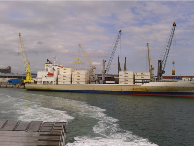The unexpected death this week of Bob Crow, leader of the RMT Union (which represents many London Underground train drivers amongst others) has prompted quite a bit of media comment over the last few days. Tributes from industrial and political leaders have expressed sincere sadness, despite what his militant public persona might have led you to expect.
I never met Bob Crow, but it seems to me that he grasped more clearly than many that what most people want in their leaders is passion and an appeal to their emotions. At a time of generally falling Union membership, he doubled RMT membership, and then doubled it again, over a decade. I doubt that he could have done that by making a careful rational case. Stack that up against managers who – as public servants, charged with careful management of public money – are obliged to make their arguments rationally. Can you imagine what would have happened if politicians had incited Londoners to picket RMT headquarters when the tube went on strike? It is hardly surprising that he made an impact.
Recalling other powerful Union figures of the past – Arthur Scargill, say - isn’t that instinctive understanding of emotional leadership and the power of passion something they had in common? And perhaps the reason we now have a much less unionised and strike-prone world than we did is in part because union leaders have become less demonstrably passionate.
We need leaders who are passionate about their cause – whether in politics, in industry, or in unions – because passion is what galvanises the led. Whichever side of the argument you are on, we need more leaders who do that, as Bob Crow did.
[contact-form][contact-field label='Name' type='name' required='1'/][contact-field label='Email' type='email' required='1'/][contact-field label='Website' type='url'/][contact-field label='Comment' type='textarea' required='1'/][/contact-form]
 Do you know where you are trying to get to? Are you sure? Could you write down clearly and succinctly what the output will be, or what success would look like? Are your objectives SMART (or at least clear)?
Often people fight shy of being that specific. The trouble is, when you are, success or failure become black and white. And that raises the stakes.
Or it may be that they just find it too hard to write such a specification – and it is hard. It forces you think through options and to make choices, often on inadequate information, and that requires a lot of confidence.
Leaving things a bit vague is more comfortable on both counts, but also makes it much less likely that you will deliver what you really wanted to. That is partly because you have less motivation to do so, but it is also partly because clarity helps everyone in the team to see the contribution they need to make. If the overall objectives are not clear, different people will interpret them differently, and their contributions will not necessarily all be exactly what is needed. It also provides a poor example for them to follow – it means that each of their contributions is also more likely to have a vague specification, and so may deviate even further from requirements.
Setting clear objectives is the first essential of leadership: if you don’t know exactly where you want to go, how can you lead other people on the journey? As the song goes, “If you don’t know where you’re going, any road’ll take you there”.
Do you know where you are trying to get to? Are you sure? Could you write down clearly and succinctly what the output will be, or what success would look like? Are your objectives SMART (or at least clear)?
Often people fight shy of being that specific. The trouble is, when you are, success or failure become black and white. And that raises the stakes.
Or it may be that they just find it too hard to write such a specification – and it is hard. It forces you think through options and to make choices, often on inadequate information, and that requires a lot of confidence.
Leaving things a bit vague is more comfortable on both counts, but also makes it much less likely that you will deliver what you really wanted to. That is partly because you have less motivation to do so, but it is also partly because clarity helps everyone in the team to see the contribution they need to make. If the overall objectives are not clear, different people will interpret them differently, and their contributions will not necessarily all be exactly what is needed. It also provides a poor example for them to follow – it means that each of their contributions is also more likely to have a vague specification, and so may deviate even further from requirements.
Setting clear objectives is the first essential of leadership: if you don’t know exactly where you want to go, how can you lead other people on the journey? As the song goes, “If you don’t know where you’re going, any road’ll take you there”.  Reading reports on the meeting on complexity in organisations that took place in Vienna last week, I started reflecting on my own experiences of complexity. As a lapsed physicist, I know that it is a fundamental law of nature that disorder (which is often much the same as complexity) tends to increase with time. The only way to reverse this trend is to do work – and even then the reduction in disorder is only local. I can’t think of any experiences that suggest that this is not just as true for organisations as for nature in general!
Most managers focus mainly on what their own areas need. They seek to improve their areas by doing work (designing and introducing changes of many kinds), and often succeed – but frequently the local success may be at the expense of making the joining up with neighbouring areas worse: overall, complexity may have increased as a result of their work, just as the laws of thermodynamics say it should!
Reading reports on the meeting on complexity in organisations that took place in Vienna last week, I started reflecting on my own experiences of complexity. As a lapsed physicist, I know that it is a fundamental law of nature that disorder (which is often much the same as complexity) tends to increase with time. The only way to reverse this trend is to do work – and even then the reduction in disorder is only local. I can’t think of any experiences that suggest that this is not just as true for organisations as for nature in general!
Most managers focus mainly on what their own areas need. They seek to improve their areas by doing work (designing and introducing changes of many kinds), and often succeed – but frequently the local success may be at the expense of making the joining up with neighbouring areas worse: overall, complexity may have increased as a result of their work, just as the laws of thermodynamics say it should!
Agree key principles to manage complexity
Avoiding that problem is not easy, and only partial solutions are possible – managers have to be trusted to manage. It can help, however, to provide a top-down framework designed to fix key principles organisation-wide, and then to allow managers the freedom to develop local solutions to problems within that framework. A self-consistent set of- Vision and values
- Strategic objectives
- Simple and clear structure for decision making
- Delegated authorities and accountabilities
- Key metrics
 A few years ago, I was attending a meeting which was a few minutes’ drive from my office. I left a little later than I intended, and although the roads were quiet, when I arrived I had to park further way from my destination than I had expected. The extra walk meant that I arrived at the meeting, which had started promptly, a couple of minutes late.
Naturally, I apologised for my lateness and explained what had happened as I sat down, thinking little of it. It was only two minutes after all. I was completely taken aback when the chair of the meeting replied in an angry voice “Two minutes can cost a life”.
I should explain that he was an ex-military man, and I can understand that being late for a rendez-vous on active service could have very serious consequences. However, not only were no lives going to be lost as a result of my lateness to that meeting; no lives were likely to be lost as a result of anyone there being late to any meeting, ever.
A few years ago, I was attending a meeting which was a few minutes’ drive from my office. I left a little later than I intended, and although the roads were quiet, when I arrived I had to park further way from my destination than I had expected. The extra walk meant that I arrived at the meeting, which had started promptly, a couple of minutes late.
Naturally, I apologised for my lateness and explained what had happened as I sat down, thinking little of it. It was only two minutes after all. I was completely taken aback when the chair of the meeting replied in an angry voice “Two minutes can cost a life”.
I should explain that he was an ex-military man, and I can understand that being late for a rendez-vous on active service could have very serious consequences. However, not only were no lives going to be lost as a result of my lateness to that meeting; no lives were likely to be lost as a result of anyone there being late to any meeting, ever.
Use criticism carefully
I might have been held up by a phone call to an important customer; I might have been resolving an important safety issue; I don’t remember. In business we are always having to balance multiple priorities, and I probably made a priority choice that I felt was in the best interests of the company. So first of all, it is always a good idea to understand the reasons for what has happened before criticising. But just as important is to make the criticism (if there needs to be one) commensurate with the offence and appropriate to the circumstances. Criticising me in a way that might conceivably have been appropriate in the army, but took no account of a completely different context, diminished my respect for the manager and left me feeling angry at his irrationality. As a result, at the very least it reduced the value of my contribution to that meeting, while I fumed; it probably had much longer-term consequences for our wider relationship. Criticism is a dangerous weapon. Used carelessly, the unintended consequences can be serious.
[caption id="" align="alignright" width="300"] Frigate Type M silhouette (Photo credit: Wikipedia)[/caption]
When I was at school I was in the cadets. One of the exciting consequences was that we would sometimes be taken off for a weekend to do training exercises at a Naval base, and one exercise we did taught me important lessons about team leadership which stick firmly in my memory to this day.
The exercise was to practice damage control on a warship. Not a real ship, of course, but a mocked-up ship’s compartment on the shore. At least there was no danger of sinking! About a dozen of us were shut in the compartment with all the tools and materials we needed to stop the leaks. Then they turned the taps on. No ordinary taps - the water level in the compartment was rising inches every minute.
What happened next amazed me. Out of all the boys in there, just three of us immediately started to do what was needed to fix the leaks. Everyone else just tried to keep out of the way. And of the three, none were the normal leaders in the group – not the best sportsmen, nor the oldest, probably not the most self-confident.
Frigate Type M silhouette (Photo credit: Wikipedia)[/caption]
When I was at school I was in the cadets. One of the exciting consequences was that we would sometimes be taken off for a weekend to do training exercises at a Naval base, and one exercise we did taught me important lessons about team leadership which stick firmly in my memory to this day.
The exercise was to practice damage control on a warship. Not a real ship, of course, but a mocked-up ship’s compartment on the shore. At least there was no danger of sinking! About a dozen of us were shut in the compartment with all the tools and materials we needed to stop the leaks. Then they turned the taps on. No ordinary taps - the water level in the compartment was rising inches every minute.
What happened next amazed me. Out of all the boys in there, just three of us immediately started to do what was needed to fix the leaks. Everyone else just tried to keep out of the way. And of the three, none were the normal leaders in the group – not the best sportsmen, nor the oldest, probably not the most self-confident.
 Frigate Type M silhouette (Photo credit: Wikipedia)[/caption]
When I was at school I was in the cadets. One of the exciting consequences was that we would sometimes be taken off for a weekend to do training exercises at a Naval base, and one exercise we did taught me important lessons about team leadership which stick firmly in my memory to this day.
The exercise was to practice damage control on a warship. Not a real ship, of course, but a mocked-up ship’s compartment on the shore. At least there was no danger of sinking! About a dozen of us were shut in the compartment with all the tools and materials we needed to stop the leaks. Then they turned the taps on. No ordinary taps - the water level in the compartment was rising inches every minute.
What happened next amazed me. Out of all the boys in there, just three of us immediately started to do what was needed to fix the leaks. Everyone else just tried to keep out of the way. And of the three, none were the normal leaders in the group – not the best sportsmen, nor the oldest, probably not the most self-confident.
Frigate Type M silhouette (Photo credit: Wikipedia)[/caption]
When I was at school I was in the cadets. One of the exciting consequences was that we would sometimes be taken off for a weekend to do training exercises at a Naval base, and one exercise we did taught me important lessons about team leadership which stick firmly in my memory to this day.
The exercise was to practice damage control on a warship. Not a real ship, of course, but a mocked-up ship’s compartment on the shore. At least there was no danger of sinking! About a dozen of us were shut in the compartment with all the tools and materials we needed to stop the leaks. Then they turned the taps on. No ordinary taps - the water level in the compartment was rising inches every minute.
What happened next amazed me. Out of all the boys in there, just three of us immediately started to do what was needed to fix the leaks. Everyone else just tried to keep out of the way. And of the three, none were the normal leaders in the group – not the best sportsmen, nor the oldest, probably not the most self-confident.
Team leadership
So what happened? The situation was one which demanded just getting stuck in and doing what was necessary, regardless of ‘position’. Those who were used to being asked to lead found themselves bypassed – there was no time for asking, even if it had occurred to anyone to do so. Team leadership arose instinctively, and was not authoritarian but part of a team effort. The team assembled within seconds with no discussion, did what it needed to do – and then vanished. What does that story tell you about leadership? First, that leadership is not the same thing as authority that is granted, does not depend on it, and may not be found in the same places. Second, that circumstances may create leaders. And finally, perhaps most importantly but also perhaps confusingly, that to lead well it helps to see yourself as part of the team you are leading. Not all managers are also leaders.
[caption id="" align="alignright" width="300"] English: neck of bottle of champagne (Photo credit: Wikipedia)[/caption]
What? Don’t you mean success?
Well, no – although that is worth celebrating too.
I came across the idea that you should celebrate failure recently in “Co-active Coaching”[1], and it makes a lot of sense. People rarely fail at things because they didn’t really try – or at least not at things that matter. First they had to find the courage to attempt something which they knew might to expose them to failure. Then, wanting to avoid failure, they tried hard, probably attempting things they had never done before. Finally they had to admit they had failed - even though in the process they had probably achieved more than they ever thought possible. All of those things are difficult, and worthy of celebration in themselves.
But there is more to it than that. Failure is an excellent teacher! When you fail, you have to face up to things you tried which did not work. Often you will want to understand why they did not work, and this may lead to more success next time.
There is also a less obvious reason. When we are criticised, blamed and shamed for failing, it usually has the desired effect of making us very keen to avoid failing again. Unfortunately, the consequences of that very understandable urge are not necessarily to make us try harder. We are very likely to learn to avoid taking the risky option in the first place, or to limit the options we consider only to the ones which appear ‘safe’.
You can’t stop failure hurting, but instead of adding to the hurt, celebrate failure – the courage, the effort, the learning involved – and at the same time create a culture in which even risky options can be seriously considered.
English: neck of bottle of champagne (Photo credit: Wikipedia)[/caption]
What? Don’t you mean success?
Well, no – although that is worth celebrating too.
I came across the idea that you should celebrate failure recently in “Co-active Coaching”[1], and it makes a lot of sense. People rarely fail at things because they didn’t really try – or at least not at things that matter. First they had to find the courage to attempt something which they knew might to expose them to failure. Then, wanting to avoid failure, they tried hard, probably attempting things they had never done before. Finally they had to admit they had failed - even though in the process they had probably achieved more than they ever thought possible. All of those things are difficult, and worthy of celebration in themselves.
But there is more to it than that. Failure is an excellent teacher! When you fail, you have to face up to things you tried which did not work. Often you will want to understand why they did not work, and this may lead to more success next time.
There is also a less obvious reason. When we are criticised, blamed and shamed for failing, it usually has the desired effect of making us very keen to avoid failing again. Unfortunately, the consequences of that very understandable urge are not necessarily to make us try harder. We are very likely to learn to avoid taking the risky option in the first place, or to limit the options we consider only to the ones which appear ‘safe’.
You can’t stop failure hurting, but instead of adding to the hurt, celebrate failure – the courage, the effort, the learning involved – and at the same time create a culture in which even risky options can be seriously considered.
 English: neck of bottle of champagne (Photo credit: Wikipedia)[/caption]
What? Don’t you mean success?
Well, no – although that is worth celebrating too.
I came across the idea that you should celebrate failure recently in “Co-active Coaching”[1], and it makes a lot of sense. People rarely fail at things because they didn’t really try – or at least not at things that matter. First they had to find the courage to attempt something which they knew might to expose them to failure. Then, wanting to avoid failure, they tried hard, probably attempting things they had never done before. Finally they had to admit they had failed - even though in the process they had probably achieved more than they ever thought possible. All of those things are difficult, and worthy of celebration in themselves.
But there is more to it than that. Failure is an excellent teacher! When you fail, you have to face up to things you tried which did not work. Often you will want to understand why they did not work, and this may lead to more success next time.
There is also a less obvious reason. When we are criticised, blamed and shamed for failing, it usually has the desired effect of making us very keen to avoid failing again. Unfortunately, the consequences of that very understandable urge are not necessarily to make us try harder. We are very likely to learn to avoid taking the risky option in the first place, or to limit the options we consider only to the ones which appear ‘safe’.
You can’t stop failure hurting, but instead of adding to the hurt, celebrate failure – the courage, the effort, the learning involved – and at the same time create a culture in which even risky options can be seriously considered.
English: neck of bottle of champagne (Photo credit: Wikipedia)[/caption]
What? Don’t you mean success?
Well, no – although that is worth celebrating too.
I came across the idea that you should celebrate failure recently in “Co-active Coaching”[1], and it makes a lot of sense. People rarely fail at things because they didn’t really try – or at least not at things that matter. First they had to find the courage to attempt something which they knew might to expose them to failure. Then, wanting to avoid failure, they tried hard, probably attempting things they had never done before. Finally they had to admit they had failed - even though in the process they had probably achieved more than they ever thought possible. All of those things are difficult, and worthy of celebration in themselves.
But there is more to it than that. Failure is an excellent teacher! When you fail, you have to face up to things you tried which did not work. Often you will want to understand why they did not work, and this may lead to more success next time.
There is also a less obvious reason. When we are criticised, blamed and shamed for failing, it usually has the desired effect of making us very keen to avoid failing again. Unfortunately, the consequences of that very understandable urge are not necessarily to make us try harder. We are very likely to learn to avoid taking the risky option in the first place, or to limit the options we consider only to the ones which appear ‘safe’.
You can’t stop failure hurting, but instead of adding to the hurt, celebrate failure – the courage, the effort, the learning involved – and at the same time create a culture in which even risky options can be seriously considered.
[1] “Co-Active Coaching” By Henry and Karen Kimsey-House, Phillip Sandahl and Laura Whitworth
Spotted from the Portsmouth to Cherbourg ferry – a container ship clearly branded ‘Fyffes’. To anyone in the UK (I’m not sure about elsewhere), that means only one thing: bananas.
How many bananas would you get on a banana boat? The banana boxes you see in supermarkets must be about 50cm x 35cm x 20cm (1/30 cubic metre) and I’d guess that they might hold about 100 bananas – so that’s something like 3000 bananas per cubic metre.
A standard container is about 2.4m x 2.4m x 12m, or 72 cubic metres – so that makes about 200,000 bananas per container. Its hard to tell how many containers there are on the boat, but perhaps 100? So maybe 20,000,000 bananas per ship – one between three for the entire population of the UK. That means we need a ship-load of bananas to arrive in Britain every day to provide the average 2 bananas a week that we each eat.
There are several interesting thoughts that follow from that. The first is simply the incredible logistical feat of providing that many ripe bananas, day in, day out, to shops across the land. Demand takes little account of seasons or weather, and bananas are quite easily damaged. Developing processes which can deliver that volume, in good condition and at the price people expect to pay, while having the resilience to cope with the vagaries of nature, is an impressive achievement. There is little to distinguish between one banana and another though – so its only getting those processes optimised that enables you to compete.
Another is the power of such rough and ready estimates. Starting from easy observations and guesses that anyone could make, we can get a pretty good estimate of shipping requirements: we might be 2x too big or small, but probably not much worse than that. Frequently there is no need for high precision, at least to start with, but the courage to estimate is not always easily found.
A final thought is the power of those little labels, When I was a child, it seemed as though every bunch of bananas had a Fyffes label on it. Fifty years later, the association is still instant. I’m not sure how that creates value for Fyffes (does it?), but the effect is unmistakable!
 What is leadership about? The very word implies movement. Leadership involves helping other people to find the way from A to B, so all leadership is change leadership of some kind. If we are sticking to A, the people may need managing, but there is not much leading involved. You don’t need a leader if you are not going anywhere.
How many times have you heard people say “if its not broken, why fix it?” Probably you have said it yourself at times. Or “I don’t want to upset the apple cart”? No-one likes change – everyone is more comfortable with the status quo. The trouble is, stability is an illusion, at least in the longer term. Everything grows - or it declines. The organisation that does not change positively is doomed eventually to change negatively.
Change is the whole point of leadership. The joke says “How many psychologists does it take to change a light bulb? One, but it has to want to change!” The job of the leader is to have the vision of where to go to, and then to get people to the point where they want to, or at least accept the need for, change.
What is leadership about? The very word implies movement. Leadership involves helping other people to find the way from A to B, so all leadership is change leadership of some kind. If we are sticking to A, the people may need managing, but there is not much leading involved. You don’t need a leader if you are not going anywhere.
How many times have you heard people say “if its not broken, why fix it?” Probably you have said it yourself at times. Or “I don’t want to upset the apple cart”? No-one likes change – everyone is more comfortable with the status quo. The trouble is, stability is an illusion, at least in the longer term. Everything grows - or it declines. The organisation that does not change positively is doomed eventually to change negatively.
Change is the whole point of leadership. The joke says “How many psychologists does it take to change a light bulb? One, but it has to want to change!” The job of the leader is to have the vision of where to go to, and then to get people to the point where they want to, or at least accept the need for, change.
[caption id="" align="alignright" width="300"] Tyrannosaurus rex, Palais de la Découverte, Paris (Photo credit: Wikipedia)[/caption]
Evolution is the natural process by which all forms of life adapt to changes in their environment. It is a very slow process, in which many small changes gradually accumulate. It is unplanned and undirected: who knows how the environment may change in the future, and so what adaptations would put us ahead of the game? Successful changes are not necessarily the best possible choices, merely the best of those that were tested. Different individuals start from different places, and so the adaptations which seem to work will vary. Consequently, over time, divergence will occur until different species result, even though each species can be traced back to a common ancestor. But evolution is brutal too: not all species will make it. Some find they have gone down an evolutionary dead end, and some that change is simply too fast for them to adapt to.
Sometimes organisational change can be like this. I once worked for a public-sector organisation which was privatised, so that it had to change from being ‘mission-led’ to being profit-led. Management set out a vision for what it wanted the organisation to become – essentially a similar, unitary, organisation but in the private sector – but was unable to make the radical changes necessary to deliver it fast enough. Evolution carried on regardless as the primary need to survive forced short-term decisions which deviated from the vision. Without a unifying mission as a common guide, different parts of the organisation evolved in different ways to adapt to their own local environments. Fragmentation followed, with a variety of different destinies for the parts, and a few divisions falling by the wayside. Despite starting down their preferred route of unitary privatisation, the eventual destination was exactly what the original managers had been determined to avoid.
What is the lesson? Ideally of course it should be possible to set out a strategic objective, and then to deliver the changes needed to get there. But if the change required is too great, or the barriers mean change is brought about too slowly, the short-term decisions of evolution may shape the future without regard to management intentions. That does not necessarily make the outcome worse in the greater scheme of things: after all, evolution is about survival of the fittest. But natural selection is an overwhelming force, and if short-term decisions are threatening to de-rail management’s strategic plan, it may be wise to take another look at the plan, and to try to work with evolution rather than against it.
Tyrannosaurus rex, Palais de la Découverte, Paris (Photo credit: Wikipedia)[/caption]
Evolution is the natural process by which all forms of life adapt to changes in their environment. It is a very slow process, in which many small changes gradually accumulate. It is unplanned and undirected: who knows how the environment may change in the future, and so what adaptations would put us ahead of the game? Successful changes are not necessarily the best possible choices, merely the best of those that were tested. Different individuals start from different places, and so the adaptations which seem to work will vary. Consequently, over time, divergence will occur until different species result, even though each species can be traced back to a common ancestor. But evolution is brutal too: not all species will make it. Some find they have gone down an evolutionary dead end, and some that change is simply too fast for them to adapt to.
Sometimes organisational change can be like this. I once worked for a public-sector organisation which was privatised, so that it had to change from being ‘mission-led’ to being profit-led. Management set out a vision for what it wanted the organisation to become – essentially a similar, unitary, organisation but in the private sector – but was unable to make the radical changes necessary to deliver it fast enough. Evolution carried on regardless as the primary need to survive forced short-term decisions which deviated from the vision. Without a unifying mission as a common guide, different parts of the organisation evolved in different ways to adapt to their own local environments. Fragmentation followed, with a variety of different destinies for the parts, and a few divisions falling by the wayside. Despite starting down their preferred route of unitary privatisation, the eventual destination was exactly what the original managers had been determined to avoid.
What is the lesson? Ideally of course it should be possible to set out a strategic objective, and then to deliver the changes needed to get there. But if the change required is too great, or the barriers mean change is brought about too slowly, the short-term decisions of evolution may shape the future without regard to management intentions. That does not necessarily make the outcome worse in the greater scheme of things: after all, evolution is about survival of the fittest. But natural selection is an overwhelming force, and if short-term decisions are threatening to de-rail management’s strategic plan, it may be wise to take another look at the plan, and to try to work with evolution rather than against it.
 Tyrannosaurus rex, Palais de la Découverte, Paris (Photo credit: Wikipedia)[/caption]
Evolution is the natural process by which all forms of life adapt to changes in their environment. It is a very slow process, in which many small changes gradually accumulate. It is unplanned and undirected: who knows how the environment may change in the future, and so what adaptations would put us ahead of the game? Successful changes are not necessarily the best possible choices, merely the best of those that were tested. Different individuals start from different places, and so the adaptations which seem to work will vary. Consequently, over time, divergence will occur until different species result, even though each species can be traced back to a common ancestor. But evolution is brutal too: not all species will make it. Some find they have gone down an evolutionary dead end, and some that change is simply too fast for them to adapt to.
Sometimes organisational change can be like this. I once worked for a public-sector organisation which was privatised, so that it had to change from being ‘mission-led’ to being profit-led. Management set out a vision for what it wanted the organisation to become – essentially a similar, unitary, organisation but in the private sector – but was unable to make the radical changes necessary to deliver it fast enough. Evolution carried on regardless as the primary need to survive forced short-term decisions which deviated from the vision. Without a unifying mission as a common guide, different parts of the organisation evolved in different ways to adapt to their own local environments. Fragmentation followed, with a variety of different destinies for the parts, and a few divisions falling by the wayside. Despite starting down their preferred route of unitary privatisation, the eventual destination was exactly what the original managers had been determined to avoid.
What is the lesson? Ideally of course it should be possible to set out a strategic objective, and then to deliver the changes needed to get there. But if the change required is too great, or the barriers mean change is brought about too slowly, the short-term decisions of evolution may shape the future without regard to management intentions. That does not necessarily make the outcome worse in the greater scheme of things: after all, evolution is about survival of the fittest. But natural selection is an overwhelming force, and if short-term decisions are threatening to de-rail management’s strategic plan, it may be wise to take another look at the plan, and to try to work with evolution rather than against it.
Tyrannosaurus rex, Palais de la Découverte, Paris (Photo credit: Wikipedia)[/caption]
Evolution is the natural process by which all forms of life adapt to changes in their environment. It is a very slow process, in which many small changes gradually accumulate. It is unplanned and undirected: who knows how the environment may change in the future, and so what adaptations would put us ahead of the game? Successful changes are not necessarily the best possible choices, merely the best of those that were tested. Different individuals start from different places, and so the adaptations which seem to work will vary. Consequently, over time, divergence will occur until different species result, even though each species can be traced back to a common ancestor. But evolution is brutal too: not all species will make it. Some find they have gone down an evolutionary dead end, and some that change is simply too fast for them to adapt to.
Sometimes organisational change can be like this. I once worked for a public-sector organisation which was privatised, so that it had to change from being ‘mission-led’ to being profit-led. Management set out a vision for what it wanted the organisation to become – essentially a similar, unitary, organisation but in the private sector – but was unable to make the radical changes necessary to deliver it fast enough. Evolution carried on regardless as the primary need to survive forced short-term decisions which deviated from the vision. Without a unifying mission as a common guide, different parts of the organisation evolved in different ways to adapt to their own local environments. Fragmentation followed, with a variety of different destinies for the parts, and a few divisions falling by the wayside. Despite starting down their preferred route of unitary privatisation, the eventual destination was exactly what the original managers had been determined to avoid.
What is the lesson? Ideally of course it should be possible to set out a strategic objective, and then to deliver the changes needed to get there. But if the change required is too great, or the barriers mean change is brought about too slowly, the short-term decisions of evolution may shape the future without regard to management intentions. That does not necessarily make the outcome worse in the greater scheme of things: after all, evolution is about survival of the fittest. But natural selection is an overwhelming force, and if short-term decisions are threatening to de-rail management’s strategic plan, it may be wise to take another look at the plan, and to try to work with evolution rather than against it. 


